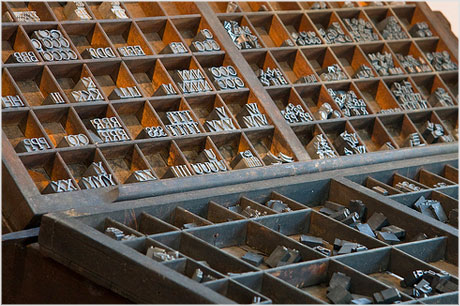When you design artwork for print, standard practice is to send a PDF to your printer. But are you 100% sure you got the settings right? Are you confident the size is correct? Have the colors been set to print standards or client brand guidelines? What about font usage?
So many things can go wrong, costing you and your client money. So to help, Sigurdur Armannsson — art director at the Icelandic Ad Agency — has prepared these 16 prepress tips that cover the major aspects for correction in your artwork. By checking each tip as you go your file will be in excellent shape for sending to the printery.
01. File the job into a tracking or accounting system
Every business needs a tracking system where information about the client and his or her jobs are filed. Systems range from high-end business software to simply using FileMaker or similar to store information. Freelancers should also use something that takes care of this. I use iBiz.
02. Use files and folders that bear the job number
Tracking systems create running numbers. You should use them for your files and folders too. The running numbers act as keys to further information about every project and client, and save you from creating new files and folders for every job. You could use abbreviations or codes for your client and then the number and a short descriptive name, e.g. ABC 12345 Brochure Spring 2010
03. Stamp the artwork
Put information inside the artwork. If the client does not object, put a short line in small type 4-4.5 pt., inside the artwork, on the back of a brochure. Include your companies name, the job number and a date. MyCompany ABC 12345 10/09. The name of the printery would be a good addition too. This will help identify the work later.
04. Make it clear who is responsible for the design
Before you start, make sure you have a design brief. What is the main purpose of the design? What are the clients motivations? Who is responsible for the job? An art director? You?
05. Proofread
The odd thing is that clients can be calm about minor errors in the design, like lines not being of same thickness or such. But errors in text are fatal. Use a good proofreader. If the client wants to proofread himself, be sure to have that in writing. An email is great confirmation.
06. Make the artwork the correct size
Does the design brief specify the size? Have you checked Document Setup again? Or the outmost frame in Illustrator? Is everyone using 210×297 as Width by Height? Did the client say an A4 because it looks like an A4 or is it 220×286? For ads, contact the magazine or website. They will love to hear from you. Always double check if you aren’t sure.
07. Define bleed and trim marks in the file
Bleeding — the distance the artwork needs to extend beyond the final size of the artwork — can vary. 3mm is most common. In some cases it may not be needed at all, nor the trim marks. Clarify before you create your PDF, and open the PDF afterward to check inclusion.
08. Ensure the typeface(s) used correlates to the clients corporate identity manual
Are you using the correct typeface for your client? Are there any unnecessary fonts that shouldn’t be included the file? In Illustrator check Document Info or Find Font… and in InDesign Find Font… under Type in the menu. When delivering artwork as a PDF there is normally no reason to outline the fonts.
09. Ensure logo usage correlates to the corporate identity manual
The client loves her logo and usually wants it bigger than we want it to be. Stick to the size in the manual or the size used for recent works. If she wants it bigger have that in writing and be sure to tell her if it’s overshadowing other information.
10. Keep the color of the logo in the right format for the media used
For print, use the logo in vector format if possible. Logos sent to you inside Word documents are no good unless the design is for web or a PowerPoint presentation. Make sure the colors of the logo are in accordance with the corporate identity manual. For print, the format should be CMYK, not Pantone unless the work is going to be printed with spot colors.
11. Keep the color of the artwork in accordance with the media used
Now, this depends on what kind of color workflow you will use. For CMYK workflow, all colors should be in CMYK. Pictures should be in CMYK, color separated for the paper used. No color profiles should be attached to the pictures. If you are still using pictures as EPS it’s time to switch over to using native Photoshop files. The reason: If you are using transparency in your artwork, like drop shadows or transparent type or colors, your PDF will most likely have torn the photos into strips. This can be avoided by using the pictures as native PSD.
For RGB workflow, you can still use CMYK colors, except you should have all photos in RGB. It’s important to have all photos in RGB and they should have a color profile attached. Use native PSD — it’s great, and has options not available to other formats.
If you are including Pantone colors, make sure only the colors used are in the file. In InDesign and Illustrator, go to the Swatch panel and in the fly-out menu choose: Select all unused and delete those colors. If in doubt, contact your printer. He will love to help you and he will most likely send you the correct settings for Photoshop that fits the jobs going to his printery.
12. Color correct your monitor every four weeks
There is no way you can use either CMYK or RGB workflow with confidence if your monitor is not color corrected at least every month. Color correction software like iOne has a reminder built in.
13. Ensure all pictures are the actual size shown
Pay close attention to the resolution of the pictures used. Most common resolution is 250-300ppi. You should try not to enlarge or minimize pictures by more than 20% of the original size. This is just a thumb rule. When you change the size inside your document you will change the output resolution too. A 300ppi picture will be 600ppi if you minimize it by 50%. Way too high a resolution. Enlarging too much might get the resolution below what is needed to pass the printery’s preflight.
14. Preflight the artwork
Preflighting the artwork before sending to the print shop is a must. If you have done all the things mentioned above, you have manually preflighted a great deal of what is needed. Using a preflight program likeFlightCheck from Markzware or similar will help further. It’s most annoying to discover just before you deliver your work that it’s not in line with necessary printing standards. If you don’t have a program like FlightCheck you can go far by using the built in document info and preflights.
In Illustrator you have Document Info. Turn off the default Selection Only and browse through the items in the list, one by one to see what’s inside your file.
InDesign has a preflight feature. In CS4 it has been moved over to Window > Output > Preflight. There you can see an overview of the document, check fonts, links etc. Also, in CS4 you can see the red or green dots at the bottom of the window that indicates various errors you may have in your file. Great help but it doesn’t beat a professional application like FlightCheck.
15. Ensure the final PDF is high resolution
Did you send your client a low resolution PDF earlier in the day? Did you remember to switch over to a high resolution output? Are you using the built in PDF settings of InDesign or Illustrator? Ask your printer for PDF job settings. The built in settings are usually not what is used for professional PDF output. Or at least know which of the built in settings you are supposed to use.
High Quality Print and Press Quality settings are tempting to use if you want quality (because of the names), but in most cases you will have to use PDF/X-1a:2001. Consult your printer here. They will love you.
16. Have artwork approved as final
Get in writing (preferably email) a client approval before the job is sent to the printery. Or in bigger agencies the approval has to come from an art director or account manager. Verbal communication cannot be relied upon if something goes wrong.
These 16 pointers may seem overwhelming at first. Don’t fret, because when you’ve worked through the steps a few times they’ll become a part of your prepress routine. You’ll be able to quickly run through the list and discover that you’ve covered almost every one while working on your design. Once again: Talk to your printer to get the best results.
And finally, here are the 16 tips without the above explanations — you can keep this handy since you already know what they mean:
- File the job into a tracking or accounting system
- Use files and folders that bear the job number
- Stamp the artwork
- Make it clear who is responsible for the design
- Proofread
- Make the artwork the correct size
- Define bleed and trim marks in the file
- Ensure the typeface(s) used correlates to the clients corporate identity manual
- Ensure logo usage correlates to the corporate identity manual
- Keep the color of the logo in the right format for the media used
- Keep the color of the artwork in accordance with the media used
- Color correct your monitor every four weeks
- Ensure all pictures are the actual size shown
- Preflight the artwork
- Ensure the final PDF is high resolution
- Have artwork approved as final.











